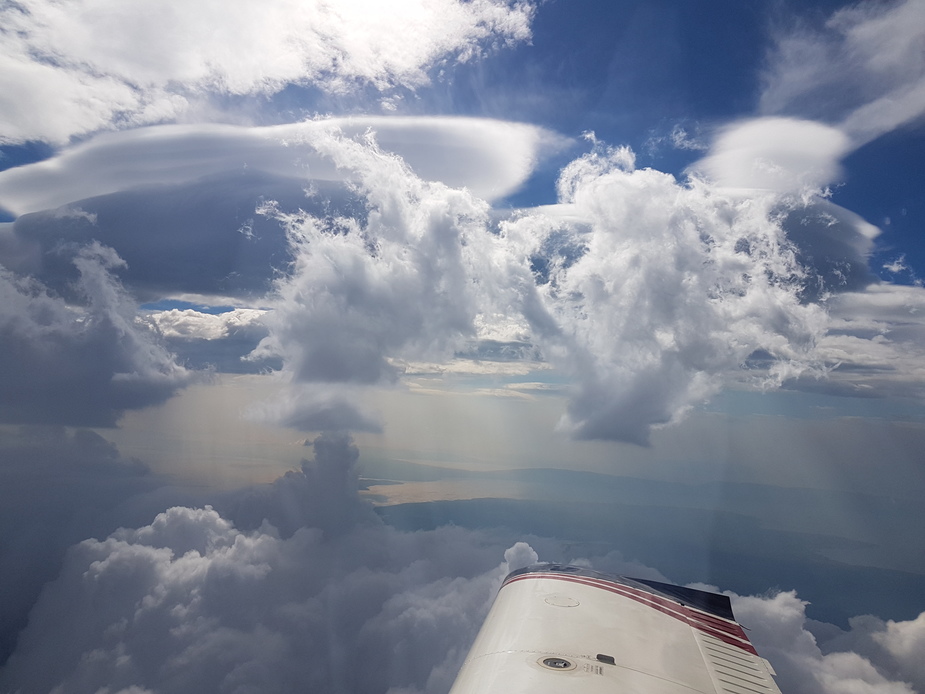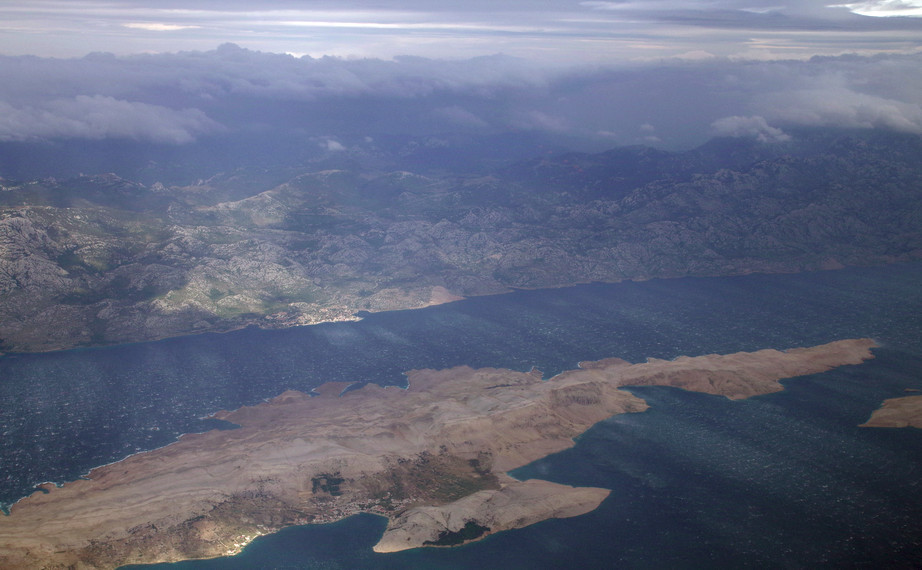On the last picture you can literally see the laminar flow (mountain wave) maybe 500-1000? feet above you (har to judge from the pictures). But the laminar flow stretches much lower than what you visually can see. It is also much more wind up there, could be 2-3 times, or more. I would try going higher. That way you could use the wave as extra lift, but if the wind is 90 degrees on your path, not much is gained, depending on the wind speed. It could be better (faster) just to plough through it. Perfect gliding conditions though 
Peter, have you ever considered revisiting your aversion to enroute IMC
Could you elaborate?
I don’t have radar.
I’m not getting any sound, is that normal?
In this case, no sound track. I do sometimes record a sound track, on a separate recorder, to show ATC interaction, but it makes a lot of work for me afterwards editing it to remove all the private conversation 
The camera is stabilised so doesn’t show the bumps much, especially as a lot of it is straight up/down stuff which won’t show up on a camera. I guess the purpose of posting that video was to ask about the conditions which were visible. The cloud formations for example should indicate turbulence.
There were just two of us, both pilots. Myself and 2greens1red.
I am sure you are right, dublinpilot  However I don’t have a placard that I know of. Maybe it is in the POH somewhere…
However I don’t have a placard that I know of. Maybe it is in the POH somewhere…
Peter wrote:
I don’t have radar.
Was there any CBs around?
Plenty of big stuff

Remaining at FL150 didn’t look a good option.
Another thing is that optimum fuel consumption is achieved with a continuous descent AFAIK.
On the enroute IMC thing, yes if there are embedded CBs around clearly you would need RADAR. But even without it and either a weather radar download on the ground or the Golze ADL device you could mostly fly IMC enroute without concern about blundering into a storm. At your typical cruise altitude you would commonly be able to visually avoid anyway.
I think you just limiting your despatch rate (or flying low over the alps and losing comfort) given there are now tools that would enable you to fly IMC with confidence a lot of the time.
Icing would still be a concern but in the mid teens it should be a lot less common.
Peter wrote:
BTW there is a reason for Va which is that the wing should stall before exceeding the max G, if hitting an updraught. This is even with zero control deflection.
What? Va is related to a control deflection. The control surface in question obviously plays a role here. It, however, doesn’t play a role when it comes to vertical gusts. There are more design requirements than just load factors and Va, you know, and AFAIK the specification contains specific requirements for vertical gusts (and pretty strong at that) at higher speeds than Va, especially at Vc (which creates a relationship between cruise speed and load factor).
An aeroplane can break up below Va and stall above it.
dublinpilot wrote:
I think you’re mixing up V-turb (turbulence penetration speed, which is the bottom of the yellow arc on your asi)
This is incorrect. Vb (turbulence penetration speed) has nothing to do with the yellow arc. It is either defined in the POH/AFM, or otherwise it is generally encouraged that pilots use Vb = Va.
At the time Peter flew down to LDSB the 0-isotherm was given as about 11.500 feet
Here is a pic of what the view was like to the east, where the wind was mostly coming from.

Note also the sea surface; the white horses are N-S and the wind turns right higher up, which is consistent. I reckon SFC wind was 40kt+

That sort of SFC wind would have produced a lot of turbulence due to the islands down below, which were otherwise probably immaterial in elevation.
The Q I have is whether flying above the mountain ridge would have put us in smoother airflow.
We were at 10k; the mountain was about 4k-5k.
Archie wrote:
This is incorrect. Vb (turbulence penetration speed) has nothing to do with the yellow arc.
True. Yellow arc runs from Vno to Vne. However, there is a relationship between Vno and Vc IIRC. I believe Vno cannot be higher than Vc and Vc is used in specification of gust envelope. Which means that if you fly at the bottom of the yellow arc (at Vno), you cannot be flying at higher speed than Vc so the aeroplane can take at least 3,000 fpm gusts from sea level up to 20,000 feet. And 3k fpm is a hell of a turbulence.
As was said before here or in the other thread, specifications change. One just can’t take the current specification and draw conclusions for a 50 year old design.
PS: Sorry for the edits. It seems I’m done for today. After posting it I thought I had a brain fart just to realize later that I had it right the first time.